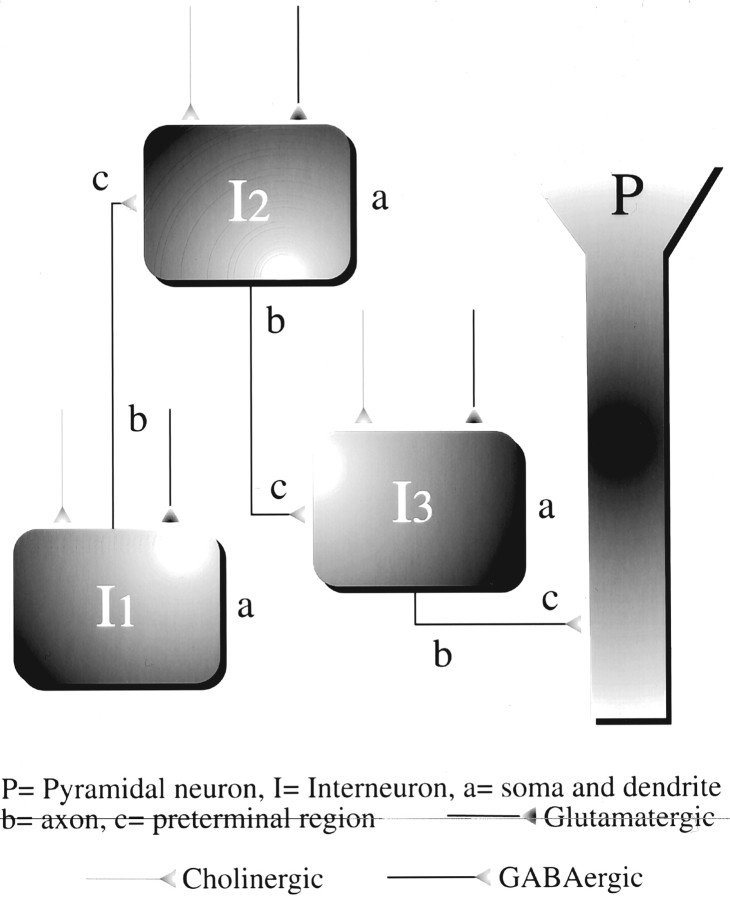Fig. 9.
Schematic representation of an interneuron circuitry in the CA1 region that can be affected by nicotinic cholinergic activity. This scheme is based on the anatomical evidence that is reported in the literature and on the functional evidence that is presented in this study. For simplicity, we have shown three interneurons (I1–I3) and one pyramidal neuron (P) connected in series. The present results and those of our previous study (Alkondon et al., 1997a) suggest that nAChRs are located in preterminal sites (c) of axons (b) and in somatodendritic regions of CA1 interneurons. Endogenous nicotinic cholinergic activity can induce either inhibition or disinhibition depending on the interneuron that is activated in the circuitry. A properly timed cholinergic signal to one interneuron (e.g.,I1) can effectively nullify the ability of a glutamatergic signal to drive a second interneuron (e.g.,I2), resulting in the disinhibition of a synaptically connected neuron (e.g., I3). The ability of nicotinic antagonists to increase the frequency of GABAergic PSCs in the interneurons supports such a scheme.

